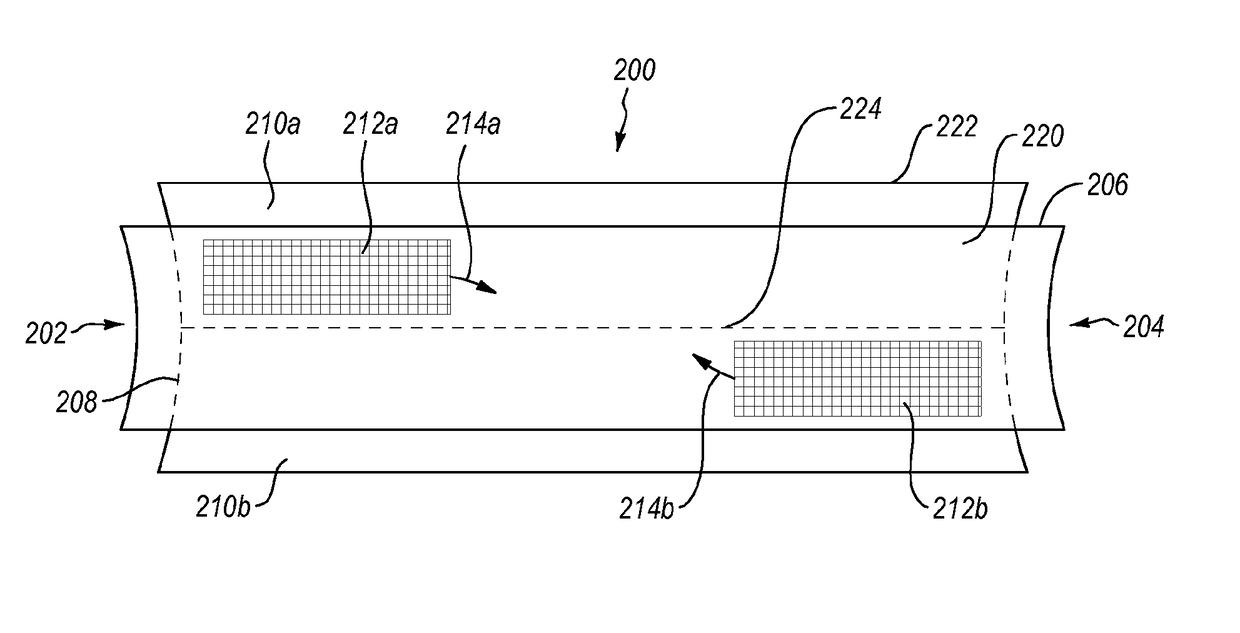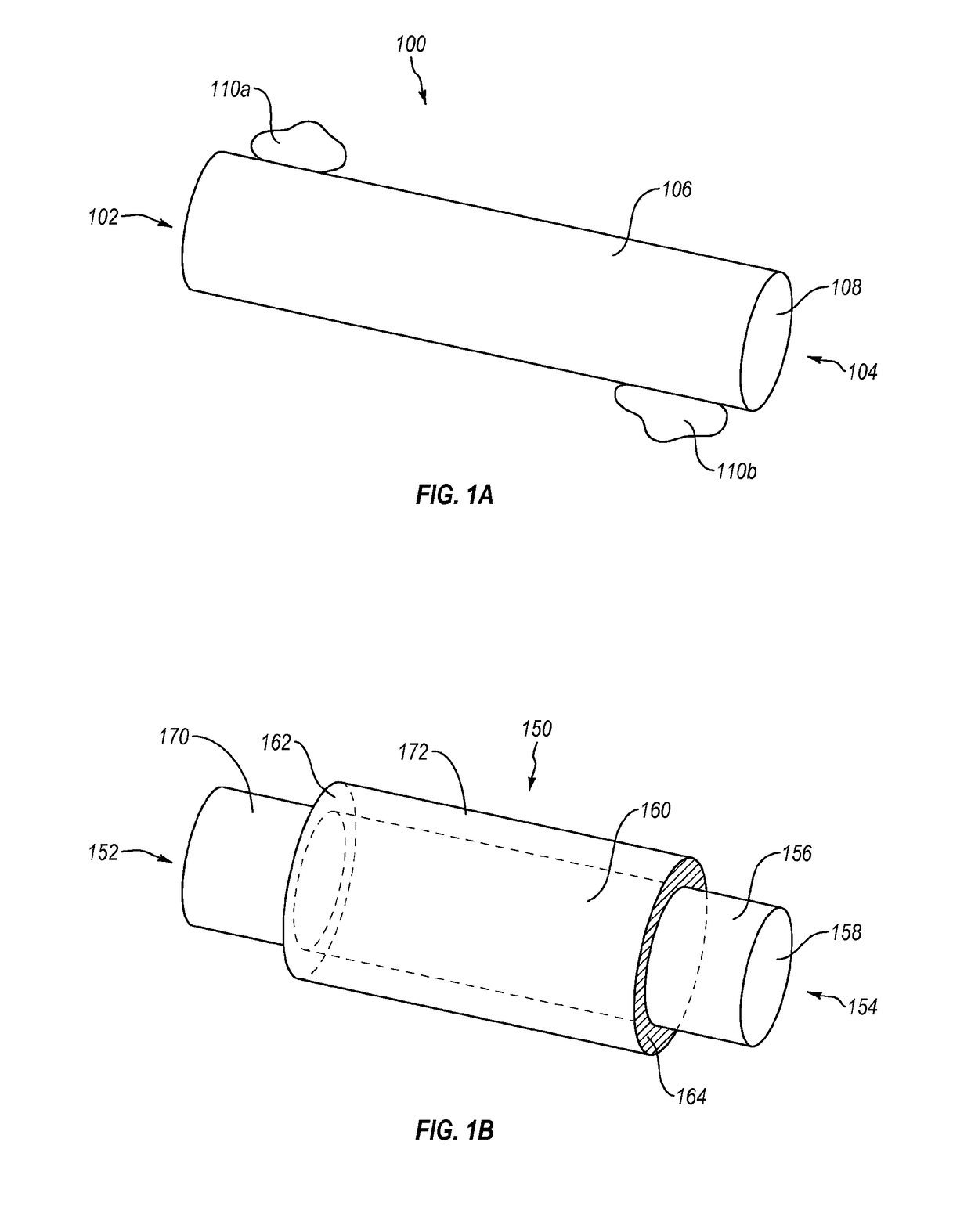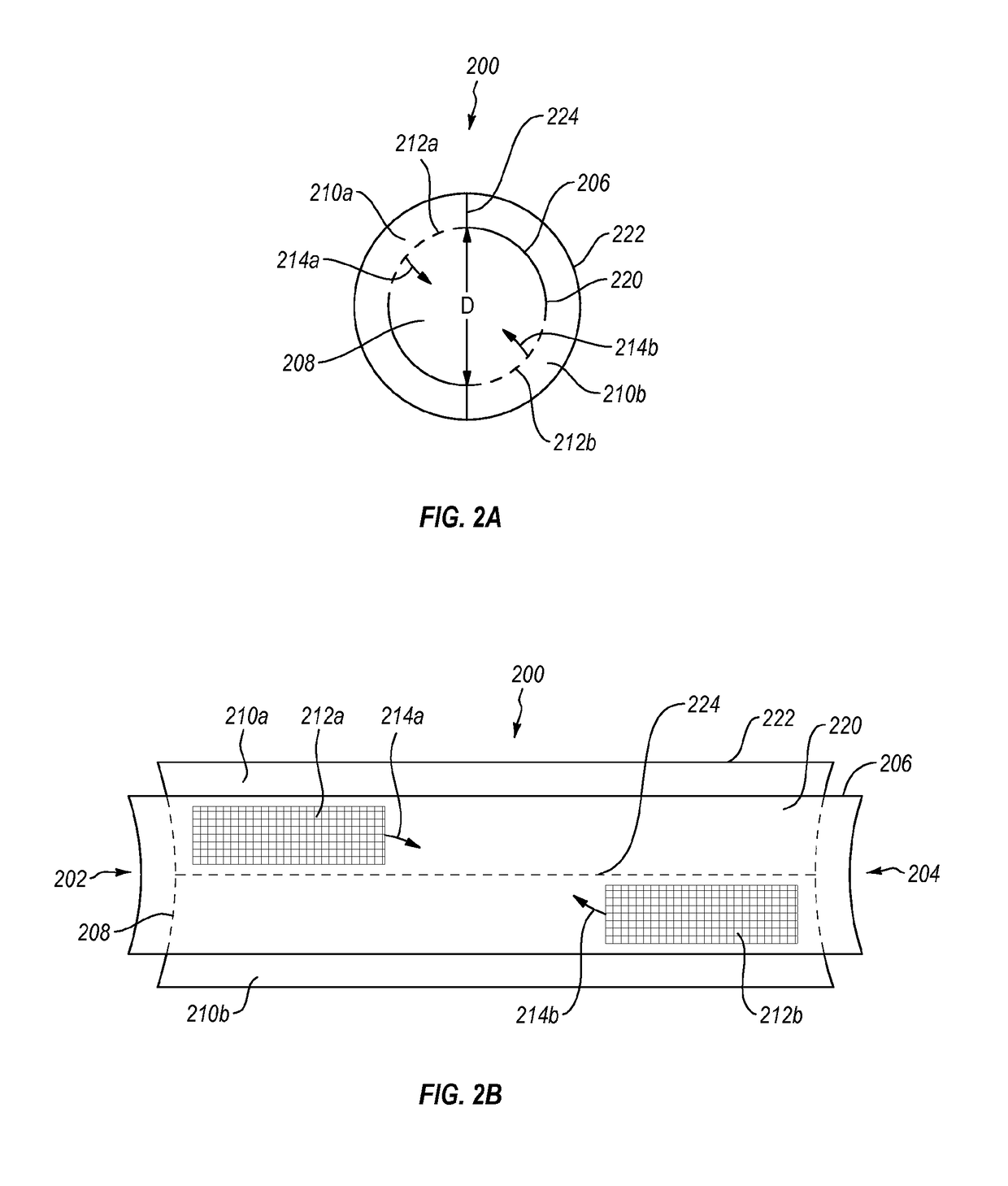Methods and devices for connecting nerves
a technology of connecting nerves and nerves, applied in the field of connecting nerves, can solve the problems of severe deterioration of the quality of life of patients, neuroma formation, chronic debilitating pain, etc., and achieve the effects of improving the degree of axon regeneration and functional recovery, reducing the risk of neuroma formation, and increasing the rate of functional recovery
- Summary
- Abstract
- Description
- Claims
- Application Information
AI Technical Summary
Benefits of technology
Problems solved by technology
Method used
Image
Examples
example 1
Release / Leakage Test
[0057]A 7-day release / leakage test was performed in order to explore the capacity of the PLGA device to deliver drugs of interest. Bovine serum albumin (BSA) was chosen to serve as the drug because its size is bigger than most of the growth factors. Two samples filled with 30 μL 300 mg / mL BSA were tested with two negative controls, two leakage test samples and a positive control, as shown in Table 1.
[0058]
TABLE 1List of samples involved in the PLGA-BSA release / leakage testSampleReser-Protein inReceiverNamePurposevoirthe ReservoirchamberPositiveThe maximumn / a42 uL 3007.5 mL PBSControl (PC)possible conc.mg / mL BSA(tween free)est. conc.in the receiverdirectly*Note: use1800 ug / mLchamber.injected into7 mL AmberUse design'sthe PBSGlass Vialdimension: max42 uL drugreservoir volume.LeakageTo test if no BSA#130 uL 3007.5 mL PBSTest 1 (LT1)is detected whenmg / ml BSAusing a devicefilled with BSAand withoutwindow & filter.LeakageDuplicate LT1#230 uL 3007.5 mL PBSTest 1 (LT2)mg...
example 2
Placement of PLGA Repair Conduits
[0063]PLGA conduits with drug reservoirs were used to repair transected nerves in an end-to-end and a side-to-side fashion in a mouse sciatic nerve model in order to determine whether biodegradation of PLGA causes an adverse reaction. Walking track analysis was performed every two weeks until animals were sacrificed at day 90. It was found that long-term placement of PLGA conduits and biodegradation of PLGA produced no adverse reaction. In general, side-to-side repair seemed to show some advantages, but side-to-side repair is not always an option if there is a nerve gap. However, it is expected that all repair outcomes (e.g., side-to-side, end-to-end, side-to-end, etc.) can be improved with the drug-delivering conduits described herein.
example 3
[0064]The drug delivery conduits described herein will be tested in a mouse sciatic nerve model. NGF and GDNF are two of many growth factors implicated in improved peripheral nerve regeneration and will be the test drugs for these experiments as they have been shown to enhance nerve growth both in vitro and in vivo. The mouse sciatic nerve has been established as a viable model for evaluation of peripheral nerve injury because of its easy accessibility and reasonable size for testing. It is hypothesized that the novel strategy described herein will provide results superior to nerve conduit alone (without drug) and will approach the results of autologous nerve graft. The device will also be used in combination with an autologous nerve graft and it is hypothesized that this combination will provide superior results to autologous nerve graft alone.
[0065]Experimental design: This efficacy study will utilize a mouse sciatic nerve gap (10 mm) model using transgenic mice that...
PUM
| Property | Measurement | Unit |
|---|---|---|
| interior diameter | aaaaa | aaaaa |
| interior diameter | aaaaa | aaaaa |
| interior diameter | aaaaa | aaaaa |
Abstract
Description
Claims
Application Information
 Login to View More
Login to View More - R&D
- Intellectual Property
- Life Sciences
- Materials
- Tech Scout
- Unparalleled Data Quality
- Higher Quality Content
- 60% Fewer Hallucinations
Browse by: Latest US Patents, China's latest patents, Technical Efficacy Thesaurus, Application Domain, Technology Topic, Popular Technical Reports.
© 2025 PatSnap. All rights reserved.Legal|Privacy policy|Modern Slavery Act Transparency Statement|Sitemap|About US| Contact US: help@patsnap.com



